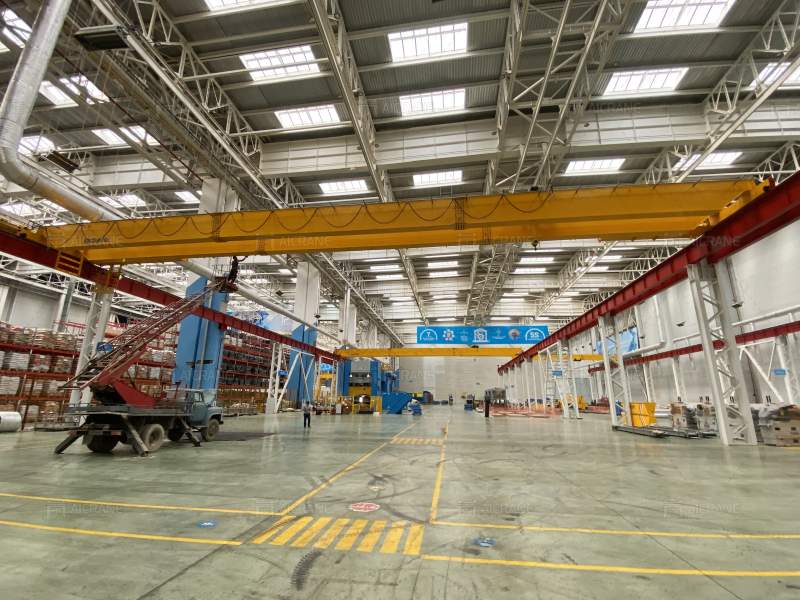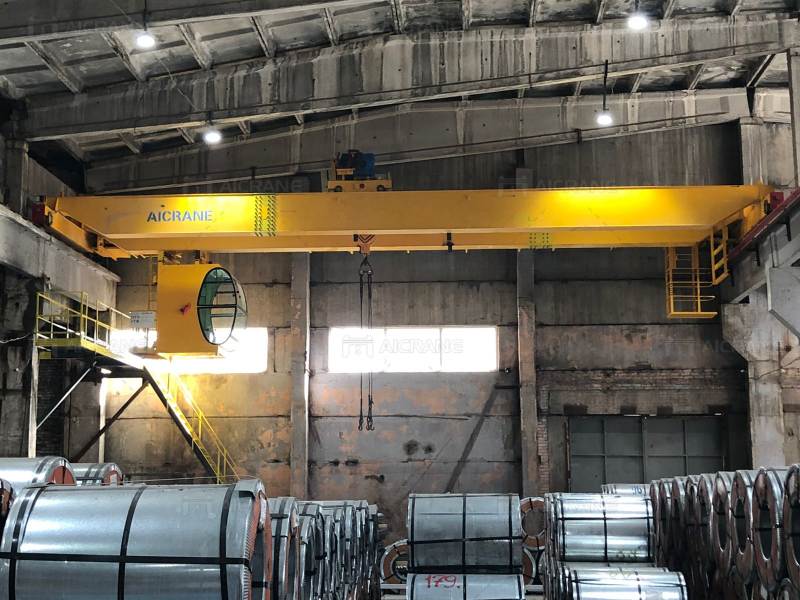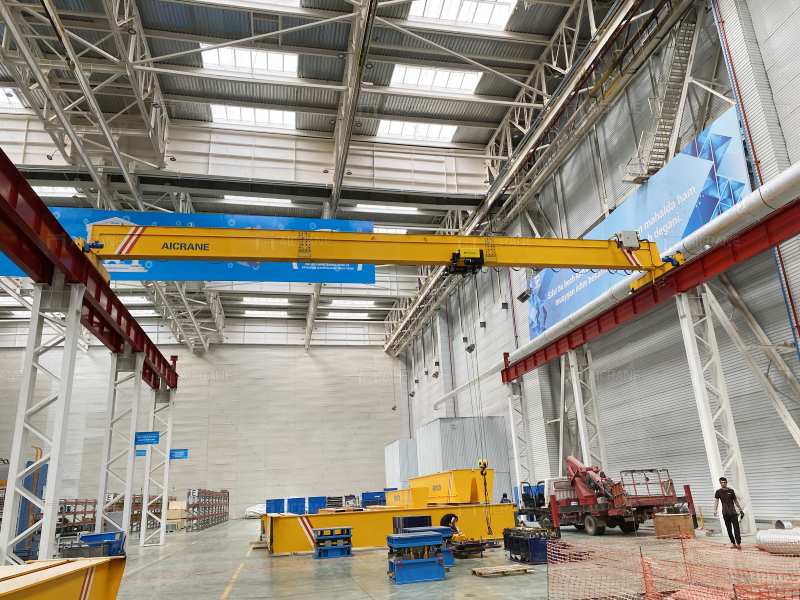The industrial landscape is evolving rapidly, with material handling systems at the core of this transformation. Electric overhead cranes are among the most vital equipment in warehouses, factories, and manufacturing facilities. With the growing demand for efficiency, safety, and sustainability, advancements in overhead cranes for sale, the emergence of heavy-duty overhead cranes, and the adoption of indoor crane systems are driving innovation in material handling. This article explores the latest trends and innovations in electric overhead cranes and how they are shaping modern industrial operations.

1. The Growing Demand for Electric Overhead Cranes
Electric overhead cranes have become indispensable for a variety of industries, from automotive manufacturing to logistics and steel mills. Their ability to lift heavy loads with precision and speed has made them the go-to solution for modern material handling needs.
a. Efficiency and Automation
The shift toward automation has been a driving factor behind the increased demand for electric overhead cranes. Heavy duty overhead cranes equipped with advanced automation features can now operate with minimal human intervention, reducing operational costs and improving productivity. These cranes are not just designed for lifting heavy loads; they are optimized for speed and accuracy, helping companies meet tighter production schedules.
b. Increased Load Capacity
As industries continue to push the limits of productivity, the demand for heavy duty overhead cranes has risen. These cranes are engineered to handle extreme weights and are typically used in high-intensity environments such as construction sites, steel mills, and large warehouses. Electric cranes, with their powerful motors and high load capacities, have the edge over traditional manual lifting equipment, allowing businesses to streamline their material handling processes.
2. Innovations in Overhead Cranes for Sale
The market for overhead cranes for sale has witnessed several advancements, driven by the need for more reliable, energy-efficient, and environmentally friendly cranes. These innovations are improving crane performance, safety, and cost-effectiveness.
a. Smart Technology Integration
One of the most significant trends in electric overhead cranes is the integration of smart technologies. These cranes are now equipped with sensors, data analytics, and cloud connectivity that provide real-time insights into crane performance, maintenance needs, and operational efficiency. This “smart” approach allows companies to monitor cranes remotely, predict potential failures, and schedule maintenance before issues arise, significantly reducing downtime.
b. Energy Efficiency and Sustainability
In the current climate of environmental awareness, electric overhead cranes are becoming more energy-efficient. Manufacturers are developing cranes that consume less power and offer regenerative braking systems that capture energy during operation, feeding it back into the system. This reduces the overall energy consumption of overhead cranes for sale and helps businesses lower their carbon footprint while keeping operational costs under control.

3. Indoor Crane Systems: The Future of Material Handling
The demand for indoor crane systems is growing, especially in warehouses, distribution centers, and factories where space is limited and high-efficiency systems are required. Indoor crane systems are compact, versatile, and designed to operate in confined spaces without compromising on performance.
a. Compact Design for Small Spaces
Indoor crane systems are designed with space optimization in mind. These systems are typically lighter, smaller, and more flexible than their outdoor counterparts. With advancements in modular design, businesses can configure indoor crane systems to suit their specific needs. These cranes allow for efficient material movement even in cramped warehouse aisles, maximizing floor space.
b. Enhanced Safety Features
Safety is a primary concern in indoor crane operations. Modern electric overhead cranes come equipped with advanced safety features such as load limiters, overload protection, and emergency stop systems to prevent accidents. Additionally, these cranes are equipped with proximity sensors and motion detectors to avoid collisions with obstacles and ensure safe operation in busy indoor environments.
4. Automation and Robotics in Electric Overhead Cranes
As industries increasingly turn to automation, electric overhead cranes are becoming integral to robotic material handling systems. These cranes can be automated to perform repetitive lifting tasks, reducing the reliance on human labor while increasing efficiency and safety.
a. Automated Guided Vehicles (AGVs)
Automated Guided Vehicles (AGVs) are being used in conjunction with electric overhead cranes to create seamless material handling systems. These vehicles can transport goods across the warehouse floor, while the cranes automatically pick up and place the items in their designated locations. This integration allows for continuous operation with minimal human intervention and maximizes warehouse throughput.
b. Autonomous Lifting Systems
The development of autonomous lifting systems is one of the most exciting innovations in the overhead crane market. With advancements in artificial intelligence and machine learning, these cranes can perform tasks such as lifting and moving loads independently. The result is a more flexible and efficient material handling solution that requires less direct control from human operators.

5. The Role of Heavy-Duty Overhead Cranes in Industrial Growth
In heavy industries such as manufacturing, construction, and mining, heavy duty overhead cranes play a pivotal role in ensuring smooth operations. These cranes are built to withstand the harshest environments and handle extremely heavy loads.
a. Increased Productivity and Load Handling
Heavy-duty overhead cranes are designed to meet the rigorous demands of industries that require frequent lifting of massive loads, such as steel, concrete, and machinery. These cranes are equipped with powerful motors, larger hooks, and reinforced components to handle these challenging tasks efficiently. As a result, companies can increase their production capabilities and minimize delays.
b. Customizable Features for Specialized Industries
Heavy-duty overhead cranes are highly customizable, with options for different spans, load capacities, and configurations. For instance, some cranes are equipped with double girder systems to enhance lifting capacity and stability. Industries that require specific features, such as high lifting heights or low-clearance designs, can work with crane manufacturers to tailor their cranes to their unique needs.
6. Cost Considerations When Purchasing Electric Overhead Cranes
When purchasing an electric overhead crane, businesses must consider several cost factors:
a. Upfront Cost vs. Long-Term Value
While overhead cranes for sale may have a significant initial investment, businesses must weigh this against the long-term benefits of efficiency, safety, and reduced downtime. Investing in high-quality heavy duty overhead cranes and automated indoor crane systems can result in substantial savings and higher returns over the life of the crane.
b. Maintenance and Operating Costs
The cost of maintaining and operating overhead cranes is another important consideration. Regular maintenance is necessary to keep cranes running smoothly, and automation features may require specialized technicians. However, the reduction in labor costs and increased productivity often offsets these expenses.
Conclusion
The future of material handling is evolving rapidly, with electric overhead cranes at the forefront of this transformation. Trends such as smart technology integration, energy efficiency, and automation are making cranes more efficient, safer, and cost-effective. By investing in overhead cranes for sale, heavy-duty overhead cranes, and indoor crane systems, businesses can optimize their material handling operations and increase productivity. As industries continue to innovate, electric overhead cranes will remain a key component in achieving operational excellence and future-proofing industrial facilities.